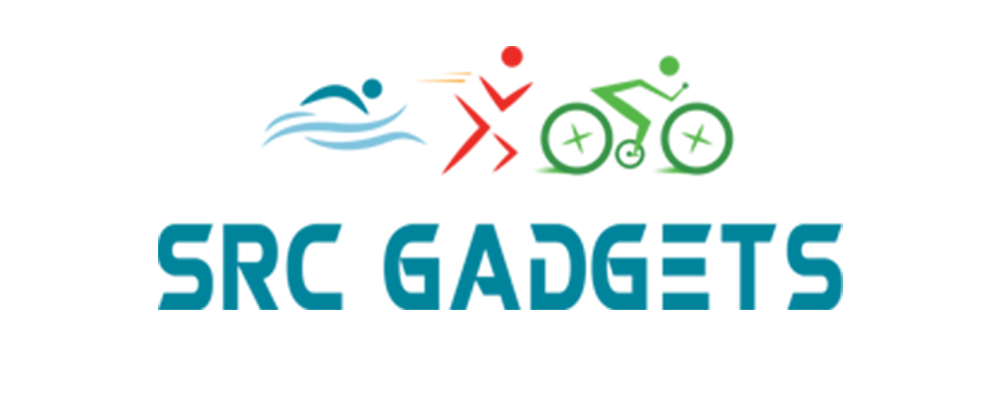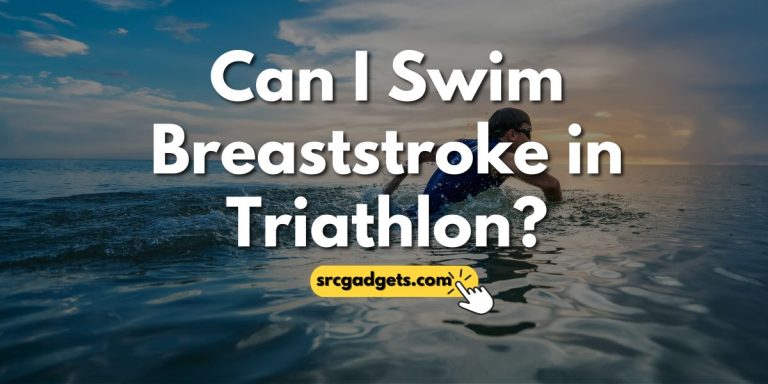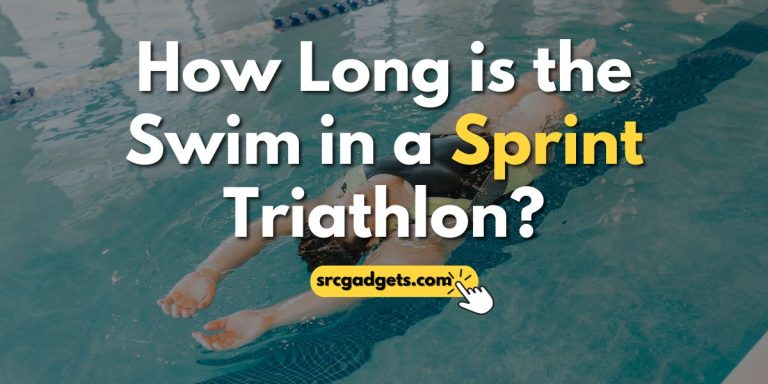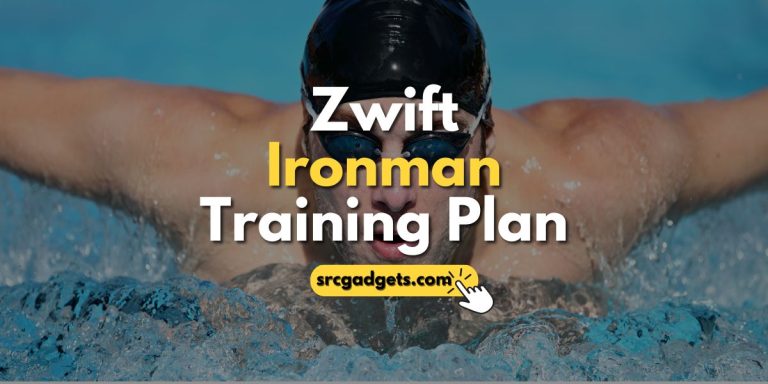How to Train for a Triathlon Swim
Swimming is often seen as the most challenging leg of a triathlon. Mastering form, building stamina, and preparing for open water conditions are key to success. This triathlon swimming guide aligns with those goals.
It will walk you through efficient swimming techniques, tailored workouts to build strength, and methods to handle variables like waves and temperature. With dedication to the process, the swim can become conquerable.
Developing Efficient Swim Technique
Fundamentals of Swim Technique
1. Body Alignment and Posture
Mastering the fundamentals of the swimming technique begins with correct body alignment. Picture your body as a straight line from your head to your toes, like a log floating on water.
This position, known as the streamlined posture, minimizes resistance and aids faster movement through the water.
2. Balancing in the Water
Focus on balancing your body to maintain a flat and level position in the water.
Avoid letting your feet drop; keep them elevated as if lying on an invisible support. This helps reduce drag and conserve energy.
3. Arm Stroke Technique
Your arms are the primary drivers of your motion in the water. They should move in a relaxed yet purposeful pattern. Envision scooping a big circle through the water, extending from in front of your head to your hip, and then reaching forward again. This motion should be smooth and continuous for effective propulsion.
4. Leg Kick Technique
Legs play a supporting role but are essential for stability. A flutter kick, which involves quick, small up-and-down movements, is ideal. Think of kicking just enough to prevent your legs from sinking but not so vigorously that it leads to rapid fatigue.
These foundational techniques are the building blocks for efficient and effective swimming, ensuring your training sessions are productive and enjoyable.
Drills and Exercises for Improved Swim Technique
1. Catch-Up Stroke Drill
Include the catch-up stroke drill in your routine to enhance your swim technique. This drill involves focusing on one arm at a time: wait until one arm completes its stroke and returns to the starting position before beginning the stroke with the other arm.
This method enhances your timing and helps refine each arm’s movement, making your strokes more efficient.
2. Side Kicking Drill
Another key drill is sidekicking. Lie on your side in the water and kick, maintaining a straight body and keeping your head aligned with your spine. Switch sides regularly.
This drill is excellent for improving body rotation, a vital aspect of powerful and efficient swimming.
Incorporate these drills into your regular training, starting with short intervals and focusing on the quality of each movement.
As you progress, gradually increase the duration of these drills. Consistent practice will lead to a smoother and more effective swimming technique.
As you progress, gradually increase the dura
Understanding Breathing Mechanics
Efficient breathing is vital in swimming. It involves finding a comfortable breathing rhythm that suits your pace. This rhythm helps maintain your energy and efficiency throughout the swim. Bilateral breathing, or alternating breaths between the left and right side with each stroke cycle, is a key technique.
This method not only ensures balance in your strokes but also prepares you for various race conditions, such as changing currents or avoiding splashes from other competitors.
Practice breathing to both sides, like learning to use both hands easily. This makes your swimming more adaptable.
Practical Tips for Improvement
Improving your lung capacity and maintaining steady breathing are crucial for triathlon swimming.
Here are straightforward and effective ways to achieve this:
1. Extend Your Swim Distances Gradually:
Start by swimming at a comfortable pace for more extended periods. This doesn’t mean pushing yourself to the limit every time. Instead, focus on increasing the distance you swim bit by bit.
This gradual increase helps your lungs get used to working harder for longer, effectively increasing your lung capacity.
2. Control Your Breathing:
During practice and races, concentrate on keeping your breathing relaxed and steady. This means inhaling and exhaling in a rhythmic pattern that matches your stroke.
For example, breathe in after every 3 arm strokes. Keeping this steady rhythm helps you avoid feeling out of breath and saves energy.
3. Practice Breathing Exercises:
Outside the pool, engage in simple breathing exercises. For instance, try inhaling deeply, holding your breath for a few seconds, and then exhaling slowly.
Doing this regularly can enhance your lung capacity and control.
4. Stay Relaxed in the Water:
Feeling stressed or anxious can make you breathe unevenly. So, work on staying relaxed in the water. This helps you keep a steady breathing rhythm. Picture yourself swimming smoothly – this kind of visualization can help, too.
The key is to practice these tips regularly. This will gradually strengthen your breathing and make it more controlled.
Then, swimming will become easier and more enjoyable during a triathlon.
Building Stamina for Long-Distance Swimming
Training Strategies
Having good stamina is also important for triathlon swimming. It’s similar to training for a marathon; you begin slowly and progressively make it more difficult. Start by swimming shorter lengths, then slowly swim further over time. Check out what to wear for triathlon swim.
It’s like walking up a hill begin with the gentler inclines before attempting the steeper ones. This gradual increase helps your body get used to it without getting too tired.
1. Interval Training
Think of interval training like sprints in a run. You swim fast for a short distance, then slow down or rest, and repeat. This kind of practice increases both your pace and ability to keep going. It’s like switching between jogging and rushing, which gets your body used to changing speeds and recovering fast.
2. Long, Steady Swims
Lastly, do some long swims during your training where you keep a steady, comfortable pace. It s like practicing for a play – you’re getting ready for how you’ll have to swim on the actual day.
These swims should be at a speed where you don’t get too worn out, so you can get used to swimming a long time, just like you’ll need to do in a triathlon.
Monitoring Progress
Keeping a Basic Training Log
Keep a basic training log. Write down important details like how far you swam, how long it took, and how you felt. This makes it easy to see your improvement.
Also, note what parts of your swimming went well during each practice. This can give you extra inspiration when you see your successes.
Set Reachable Goals
Pick goals you can meet, like swimming a set length without a break. Slowly raise these goals to keep testing yourself.
Remember to celebrate when you reach a goal. This will motivate you to keep improving.
Check Your Progress Regularly
Compare your swim times often to the goals you set to see your gains. Change the goals based on how you’re improving.
Tracking progress helps you stay motivated and keep sharpening your skills.
Tailoring Your Training
If you regularly meet goals, make harder ones. If you have trouble, work more on methods or endurance. This keeps training matched to your changing abilities and needs.
Staying flexible based on your progress will lead to continued improvement over time.
Overcoming Common Obstacles in Triathlon Swimming
Physical and Mental Barriers
Triathlon swimming often brings challenges like fatigue, muscle cramps, and anxiety. To effectively manage these:
1. Tackling Fatigue and Cramps:
Get enough rest. It allows your body to heal and gears you up for hard training. Eat nutritious foods, especially ones with magnesium and potassium, to stop cramps. Stay hydrated since dehydration often causes muscle cramps. Listen to your body when it feels drained so you don’t overdo it and get injured.
2. Managing Anxiety:
Feeling anxious before a race is common. Tackle it by doing deep breathing to relax your mind and reduce stress. Visualizing is also useful. Imagine swimming steadily, conquering each barrier. This mental rehearsing can boost confidence and how you do it.
Staying positive and focused makes dealing with anxiety much easier.
By addressing these physical and mental aspects, you’ll be better equipped to handle the challenges of triathlon swimming.
Environmental Challenges
Swimming in open water, such as oceans or lakes, brings challenges compared to pool swimming. These include dealing with waves, moving currents, and water temperature changes. Training in similar conditions to what you’ll face on race day is beneficial.
1. Adapting to Waves and Currents
Waves can disrupt your swimming rhythm, while currents can push you off course. To handle this, practice in open water to get used to these conditions. Learn to lift your head slightly (known as ‘sighting’) to spot buoys or landmarks, ensuring you re heading in the right direction.
2. Managing Temperature Variations
Water temperatures can vary greatly, affecting your comfort and swim pace. Acclimate your body by training in different water temperatures. This exposure helps you adjust your swimming technique and pace as needed.
Enhancing Performance: Tools and Techniques
Equipment and Gear
Investing in the right equipment and gear is a crucial step in improving your triathlon swim. Let’s break it down into simple terms:
1. Swimwear:
Choose quality swimwear that fits comfortably. Look for swim trunks or a one-piece suit that allows for easy movement. The right swimwear should feel like a second skin, preventing drag in the water.
2. Goggles:
Goggles are your underwater eyewear. They protect your eyes and help you see clearly. Find a pair that fits snugly but not too tight. Anti-fog lenses are a plus.
Proper gear keeps you comfortable and significantly impacts your performance and overall training experience. So, make these two choices wisely, and you’ll be on the right path to success in your triathlon swim.
Mastering Advanced Skills
1. Master Drafting
Swim close behind other swimmers. It reduces the water resistance you must overcome, so you use less energy. Think of it like car drafting – you move faster while spending less effort. Practice it regularly!
2. Pace Yourself
Don’t max out your speed for the full race distance. It’s better to hold yourself back a little and then push hard in key moments. Figure out pacing strategies that work for you during long training swims. Smart pace adjustment is vital so you don’t run out of steam before the finish.
3. Refine Your Stroke Mechanics
Improving the efficiency of each arm pull means faster swimming with the same effort. Pay attention to hand entry angles, arm positions, body rotation, and other stroke fundamentals.
Work on one area at a time until it becomes second nature. Get coach feedback, too – they’ll spot areas for streamlining your stroke.
Conclusion:
Training for a triathlon swim requires dedication to proper form, building stamina, and adapting to race conditions. But the payoff is huge. With strategic training, what once seemed intimidating will start feeling like second nature.
Before you know it, you’ll be gliding through the water with confidence, focused, and strong for the rest of the race. Trust the process and believe in yourself.
With the proper preparation, you’ll cross that finish line fueled by pride and ready for your next triathlon challenge.
Frequently Asked Questions:
How often should I train for a triathlon swim?
Most experts recommend swimming 3-4 times weekly for proper triathlon training, increasing the duration as your event nears. Include technique drills, intervals, and how to train for a triathlon without a pool.
What should I look for in a swimming wetsuit?
Choose a flexible wetsuit that allows shoulder and arm motion. Test thickness, buoyancy, and sizing based on temperature. Non-wetsuits for warmer races.
What muscle groups should I strengthen for better swimming?
Build shoulder, back, core, and glute strength outside the water. These muscles provide stability and power to enhance propulsion.





